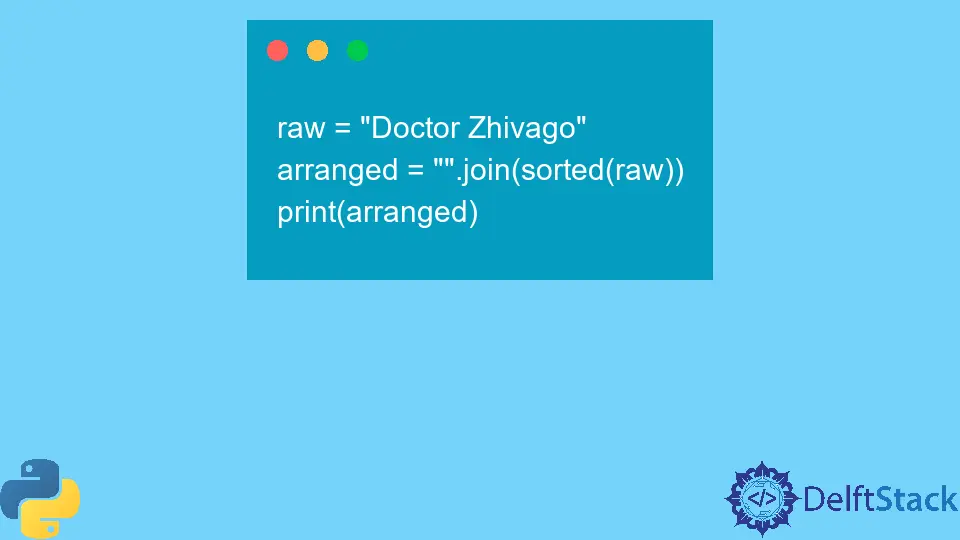Python 按字母順序排序字串
Muhammad Maisam Abbas
2023年1月30日

本教程將討論在 Python 中按字母順序對字串進行排序的方法。
使用 Python 中的 sorted() 函式按字母順序對字串進行排序
Python 中的 sorted() 函式 用於按元素的值對可迭代物件進行排序。正如我們已經知道的,python 字串是一個可迭代物件。因此,我們可以使用 sorted() 函式按字母順序對字串進行排序。下面的示例程式碼向我們展示瞭如何在 Python 中按字母順序對字串進行排序。
raw = "Doctor Zhivago"
print(sorted(raw))
輸出:
[' ', 'D', 'Z', 'a', 'c', 'g', 'h', 'i', 'o', 'o', 'o', 'r', 't', 'v']
我們對 raw 字串進行排序並在控制檯上顯示輸出。這種方法根據元素或字元的 ASCII 值進行排序。這種方法的唯一問題是 sorted() 函式只返回一個排序字元列表。
使用 Python 中的 str.join() 函式按字母順序對字串進行排序
前面的方法工作正常,但該方法的唯一問題是 sorted() 函式只返回已排序字元的列表。這個問題可以通過 str.join() 函式 解決。str.join() 函式接受一個可迭代物件並將每個元素附加到呼叫字串的末尾。下面的示例程式碼向我們展示瞭如何使用 Python 中的 str.join() 函式按字母順序對字串進行排序。
raw = "Doctor Zhivago"
arranged = "".join(sorted(raw))
print(arranged)
輸出:
DZacghiooortv
我們對 raw 字串進行排序,將結果儲存在 arranged 字串中,並將 arranged 字串顯示給使用者。我們使用帶有 join() 函式的空字串將排序後的字元附加到空字串的末尾。
Maisam is a highly skilled and motivated Data Scientist. He has over 4 years of experience with Python programming language. He loves solving complex problems and sharing his results on the internet.
LinkedIn